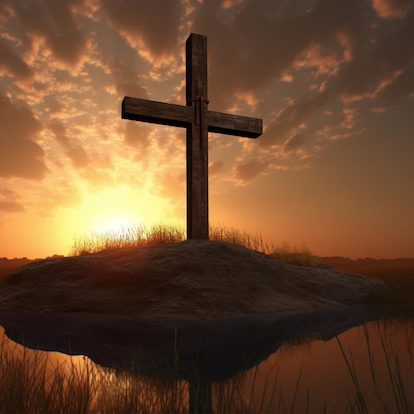GodsGrace
CF Ambassador
- Dec 26, 2015
- 30,018
- 11,950
As I said, Jesus was probably born in September. Following are the reasons why by John Reid:1. You claim December 25th is not Jesus birthday, yet you document no proof of that.
2. You say you believe that picture is a picture of Jesus, yet you have no proof of that either.
You just seem to be "all smoke and no action" here today.
Maybe it's time for a bowl of cherries or something.
This will be interesting information for this thread:
The Clues in Luke's Gospel
On the surface, the accounts of Matthew and Luke reveal little about the time of Jesus' birth. No dates are given, no season of the year is named. As a well-regarded historian, Luke, however, provides a sound, orderly account of the events that removes any doubt as to the general time of Jesus' birth. All the clues are there, and all that is required is to dig them out and put them in order to discover the truth.
In a long section covering Luke 1:5 through 2:8, Luke writes of a specific series of events in chronological order. He begins by telling the story of Zacharias, a priest, and his wife Elizabeth, who were childless. While administering his priestly duties during the course of Abijah, Zacharias was visited by the angel Gabriel, who told him that his prayers had been answered and that he and Elizabeth would have a son. They were to name him John.
Because Zacharias doubted that this would happen, Gabriel informed him that he would not be able to speak until the birth of his son. As soon as his service in the Temple was completed, he returned to his own house. Elizabeth soon conceived and hid herself five months, unsure of how her pregnancy would be viewed.
In the sixth month of Elizabeth's pregnancy, Gabriel visited Mary and informed her, "And behold, you will conceive in your womb and bring forth a son, and shall call His name Jesus" (verse 31). Soon thereafter, Mary visited her cousin Elizabeth and stayed with her until the latter's ninth month, leaving just prior to John's birth. Jesus, then, was born approximately six months after John.
What information do we have up to this point?
» Zacharias, a priest, performed his duties during the course of Abijah.
» After he returned home from Jerusalem, Elizabeth conceived.
» Mary conceived in the sixth month of Elizabeth's pregnancy.
» John was born approximately six months before Jesus.
The Course of Abijah
To date Jesus' birth, we need a starting point. Fortunately, Luke supplies one in mentioning "the course of Abijah" (Luke 1:5). Is it possible to know if this course existed then, when it fell during the year, and how long it lasted?
Indeed it is!
I Chronicles 24 lists the courses, divisions or shifts of the priesthood that served in the Temple throughout the year. Verse 1 states, "These are the divisions of the sons of Aaron." Among the sons of Eleazar were sixteen heads of their father's house, while among the sons of Ithamar were eight additional heads of house, making twenty-four courses (verse 4).
These courses of priests were divided by lot to be officials of the sanctuary and of the house of God (verse 5). Beginning on Nisan 1, these courses rotated throughout the year, serving in the Temple for one week apiece. The course of Abijah, the course during which Zacharias was responsible to work, was the eighth shift (verse 10).
Josephus, the first-century Jewish historian—who was, by the way, of the priestly lineage of the course of Jehoiarib, the first course—supplies further information about the priestly courses.
"He [David] divided them also into courses: and when he had separated the priests from them, he found of these priests twenty-four courses, sixteen of the house of Eleazar and eight of that of Ithamar; and he ordained that one course should minister to God [during] eight days, from [noon] Sabbath to [noon on the following] Sabbath. And thus were the courses distributed by lot, in the presence of David, and Zadok and Abiathar the high priest, and of all the rulers: and that course which came up first was written down as the first, and accordingly the second, and so on to the twenty-fourth; and this partition hath remained to this day" (Antiquities of the Jews, 7:14.7).
These courses were strictly followed until the Temple was destroyed in AD 70.
PART I









